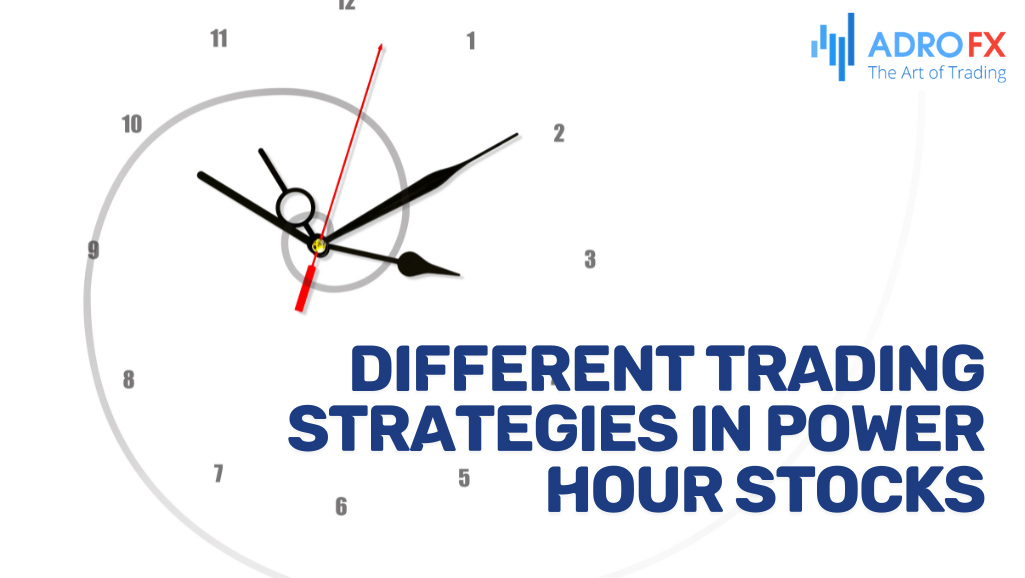Strategies for Profiting in Stock Market Power Hours: A Comprehensive Guide

Engaging in stock trading during specific high-activity periods, known as "power hours," is a strategic approach that offers opportunities for both part-time traders and long-term investors. While long-term investors prioritize stability, part-time traders can leverage the volatility within specific time frames for potential gains. This article explores the concept of power hour stocks, delving into optimal trading times, strategies, and factors to consider. Whether you're a part-time trader seeking immediate profits or a long-term investor navigating market dynamics, understanding power hour stocks is essential in today's dynamic financial landscape.
Trading Power Hour Stocks
For part-time traders, the significance of power hour stocks outweighs that for long-term investors. However, leveraging the volatility of stocks based on specific time frames is a prudent strategy regardless of your investment horizon.
Power hour stocks refer to the practice of trading stocks during specific periods when the market is performing exceptionally well. Rather than dedicating the entire day to monitoring the market or making decisions solely based on historical performance, you can strategically allocate your time and still achieve success. Certain time frames within a trading day are recognized as power hours.
Professional traders and analysts often consider specific hours on trading days, such as Mondays and Fridays, as power hours. Your objective is to engage in stock trading during these hours to optimize your assets and take advantage of services like tracking outages.

When Do Power Hours Occur?
The stock market's power hour is characterized by increased trading activity, marked by frequent and substantial transactions that significantly impact stock values and market dynamics. There are typically two primary power hours that traders focus on.
The first occurs at the market open, usually spanning from 9:30 to 10:30 am Eastern time. The second is during the market's closing hour, between 3 to 4 pm Eastern time. The final hour of regular stock trading tends to witness significant market moves.
Recognizing that not all traders can engage in full-time trading, focusing specifically on these two power hours allows for trading during periods of heightened volatility. By concentrating efforts during these hours rather than the entire trading day, traders increase their likelihood of achieving profitable outcomes.
Morning And Afternoon Power Hours
Now that you have a grasp of the concept of the stock market power hour, let's delve a bit deeper. As mentioned earlier, there are two specific time frames that are optimal for trading, and they align with the practices of the majority of traders. The morning power hour, from 9:30 to 10:30, coincides with the opening of the US market.
During this time, traders aim to capture and finalize the majority of their trades from the previous day. Consequently, mornings often witness spikes in the stock market as traders utilize data and insights related to market trends. Trading stocks in the morning becomes a wise strategy given this context.
The afternoon power hour shares similarities with the morning session, characterized by increased trading volume and market volatility. This period corresponds to the market's closing hours. In the final hour of regular stock trading, traders strive to close their positions and conclude their deals.
As a result, the market experiences a surge in activity, and many traders consider this the most crucial time in a typical trading day. It's important to note that a thorough analysis of the companies is essential before proceeding. Examine site statistics, relevant results, and recommendations for a better understanding. Ensure that the content you are currently viewing includes necessary securities information for stock trading. Ads and content often feature personalized information, so reviewing site statistics or exploring non-personalized content on the web can provide additional insights.

Panics And Spikes In Power Hour Stocks
Panics and spikes are integral aspects of power hour stocks. You might wonder how one can predict if there will be panic or a spike the next day. General indicators, including past performance and data related to the general location, can provide insights.
For a morning spike, positive earnings reports or other strong catalysts from the company are key indicators. Additionally, when a stock reaches new highs near the end of the previous day, it solidly indicates a spike in the next day. However, sometimes spikes can occur without apparent causes, requiring vigilant observation.
Similarly, predicting a panic or market crash is possible in certain situations. A poor finish for a stock on the previous day often leads to panic the next day. Monitoring activities like Google searches and ads tailored to your stock interests can offer valuable information.
It's crucial to recognize that some slower traders may fail to grasp market dynamics and miss the momentum shift from the previous day. Consequently, they may sell at the market open, contributing to panic. If you're considering trading during power hour stocks, a thorough analysis of market crashes and spikes is essential for informed decision-making.
Factors To Consider In The Power Hour Stock Market
Regardless of how wisely you make your decisions, caution is crucial during the power hours when the market experiences heightened activity. In these dynamic periods, where market crashes and spikes can occur rapidly, informed decision-making becomes paramount. Here are some factors to consider when trading during power hours:
- Price-To-Earnings Ratios
The Price-to-Earnings (P/E) ratio is a fundamental metric known to traders worldwide, offering valuable insights into the stock market. Calculated by dividing the price of a company by its annual earnings per share, this ratio provides a solid indication of a company's stock performance. For instance, a P/E ratio of 25 may suggest that the company is not generating enough income to justify its high share price, making it potentially pointless to trade.
- Options
Options play a crucial role as instruments that enable day traders to speculate on changes in the price of a stock. Understanding option contracts allows traders to monitor and analyze the sentiments of other market participants toward a particular asset. Following the trading activity of others through options can also help detect fraudulent and abusive measures within the market.
- Federal Reserve Announcements
A factor that may not directly relate to the market but holds significant influence is the Federal Reserve announcements. Approximately eight times a year, the Federal Open Market Committee conducts meetings and releases public statements discussing specific aspects and implementing changes in the federal monetary system.
Being aware of Federal Reserve announcements is essential, as changes in these statements, such as declines in employment or adjustments to the federal funds rate, can have a profound impact on the market. Staying informed about these announcements is crucial for traders to anticipate and navigate potential market tsunamis triggered by such events.

Different Trading Strategies in Power Hour Stocks
Now that we have a basic understanding of power stock hours, let's explore how traders implement different trading strategies during this time.
- Scalping
For beginners, scalping stands out as one of the best trading strategies during power hours. Scalping involves executing short-term trades to quickly profit from reselling. The focus is on the number of trades rather than the scale of each. A crucial aspect of scalping is having a strict exit strategy. Positions need to be held briefly, and once they turn profitable, they should be closed promptly. While scalping might not be highly effective in general, during power hour stocks, day traders can capitalize on the fast-paced market movements. Successfully executing quick trades during this time can result in significant profits. However, it requires experience and quick decision-making due to the rapid market shifts.
- Swing Trading
Swing trading is a more technical approach compared to scalping. This strategy aims to benefit from short to medium-term gains over a chosen period. In swing trading, traders conduct in-depth analysis and research of stock prices. Unlike scalping, positions are held for a more extended period. The pre-close power hour is considered the optimal time for swing trading. During this period, traders can analyze the stock's performance, helping them avoid risks and fluctuations.
Disadvantages of Power Trading Hour
While trading power hour stocks appears attractive, it comes with its downsides. The intense market activity during this time increases the likelihood of inherent risks. Traders must be aware of and accept these risks when engaging in power hour trading. Additionally, achieving success in power hour stocks requires thorough analysis and research of stock market trends, which can be time-consuming and challenging at times. Traders should be prepared to invest the necessary time and effort to navigate these challenges successfully.
Conclusion
In the fast-paced realm of financial markets, the concept of power hour stocks emerges as a valuable tool for traders seeking to optimize their trading strategies. By strategically focusing on specific high-activity periods, traders can capitalize on market volatility and increase their chances of successful outcomes. However, it's crucial to acknowledge the inherent risks and challenges associated with power hour trading, requiring thorough analysis, informed decision-making, and a readiness to navigate dynamic market conditions. As part-time traders and long-term investors navigate the complexities of the stock market, a nuanced understanding of power hour stocks becomes an invaluable asset in achieving financial goals.
About AdroFx
Established in 2018, AdroFx is known for its high technology and its ability to deliver high-quality brokerage services in more than 200 countries around the world. AdroFx makes every effort to keep its customers satisfied and to meet all the trading needs of any trader. With the five types of trading accounts, we have all it takes to fit any traders` needs and styles. The company provides access to 115+ trading instruments, including currencies, metals, stocks, and cryptocurrencies, which make it possible to make the most out of trading on the financial markets. Considering all the above, AdroFx is the perfect variant for anyone who doesn't settle for less than the best.










